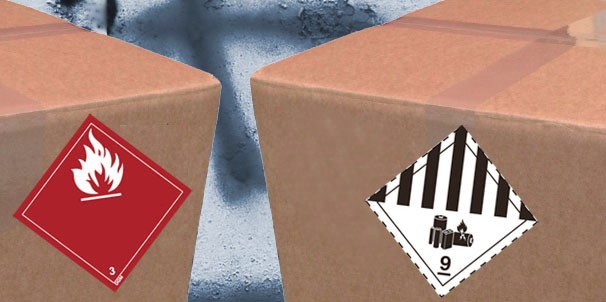IATA - Air freight, Regulatory & Compliance
Lithium Battery Segregation Provisions
The 59th edition of the IATA Dangerous Goods Regulations (DGR) has introduced lithium battery segregation provisions for certain packages. This has been a result of our better understanding of the risks posed by one of the most common dangerous goods that are shipped worldwide. While some of these provisions will come into effect immediately together with the rest of the new provisions on January 1st, 2018, for others a transitional period has been devised.

The segregation table (IATA DGR Table 9.3.A) indicates what dangerous goods must not be stowed on an aircraft next to each or in a position that would allow interaction between them in the event of leakage. In the 59th edition of the DGR, the table has been updated to include the new segregation requirements for packages containing:
- Lithium ion batteries (UN 3090) prepared in accordance with Section IA or Section IB of packing instruction 965.
- Lion metal batteries (UN 3480) prepared in accordance with Section IA or Section IB of packing instruction 968.
These are the only dangerous goods from class 9 that have segregation requirements. As per paragraph 9.3.2.1.3, they must be segregated from dangerous goods bearing a hazard label for Class 1 (other than Division 1.4S), Division 2.1, Class 2, Division 4.1 or Division 5.1. These new requirements are not becoming mandatory until January 1st 2019, but it is recommended that operators take steps to implement them as soon as possible. However, segregation provisions are also used as a reference for mixed packing (which dangerous goods may be packed together inside the same outer packaging) and preparation of overpacks:
- According to paragraph 5.0.1.5.1, the aforementioned lithium batteries packages are not permitted in an overpack with packages containing dangerous goods classified in class 1 (other than Division 1.4S), Division 2.1, Class 3, Division 4.1 or Division 5.1.
- In the case of different dangerous goods packed in one outer packaging, paragraph 5.0.2.11.h), note 4, explains as well that lithium batteries prepared according to sections IA or IB of packing instructions 968 or 965 are not permitted in the same outer packaging as other dangerous goods in the previously mentioned classes and divisions.
In these two cases, the new provisions come into effect on January 1st 2018; there is no transitional period. As our understanding of the risks posed by the transportation of lithium batteries, one of the most common dangerous goods shipper worldwide, grows, the dangerous goods regulations need to be adjusted. DGM Australia will help you comply with the latest IATA regulations. Contact us for more information and advice.

